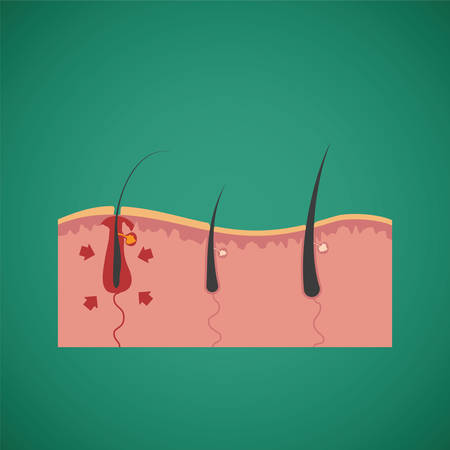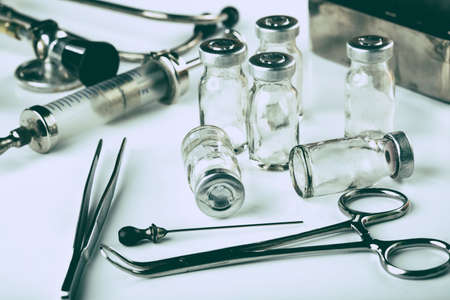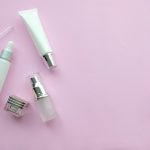1. Understanding Chemical Peels and Their Benefits
Chemical peels are a popular skincare treatment designed to improve the skins appearance by removing dead skin cells and stimulating new cell growth. They involve applying a chemical solution to the skin, which causes the outer layer to exfoliate and eventually peel off, revealing fresher, smoother skin underneath.
How Do Chemical Peels Work?
The process of a chemical peel varies depending on its strength and the specific concerns being addressed. Generally, the steps include:
- Application: A chemical solution is applied to the skin.
- Reaction: The solution penetrates the skin layers, breaking down damaged cells.
- Peeling: Over the next few days, the treated skin peels away.
- Renewal: New, healthier skin replaces the old layer.
Skin Concerns Addressed by Chemical Peels
Chemical peels can help with a variety of skin issues, making them a versatile treatment option. Here’s a breakdown of common concerns they address:
| Skin Concern | How Chemical Peels Help |
|---|---|
| Acne & Acne Scars | Exfoliates clogged pores and promotes skin regeneration to reduce scars. |
| Hyperpigmentation | Evens out skin tone by removing dark spots and discoloration. |
| Fine Lines & Wrinkles | Boosts collagen production for smoother, youthful-looking skin. |
| Dull Skin | Removes dead skin cells to reveal a brighter complexion. |
| Aging & Sun Damage | Treats sunspots and improves overall skin texture. |
Types of Chemical Peels
Chemical peels come in different strengths, each suited for specific skincare needs:
- Superficial Peels: Mild peels that target minor imperfections and require little downtime.
- Medium Peels: Penetrate deeper into the skin to treat more noticeable concerns like acne scars and pigmentation.
- Deep Peels: Intensive treatments that address severe wrinkles and deep scars but require longer recovery time.
2. Complementary Skincare Treatments to Enhance Results
Chemical peels are a powerful way to rejuvenate your skin, but when combined with other skincare treatments, the results can be even more impressive. Some treatments work exceptionally well alongside chemical peels, helping to boost effectiveness and improve overall skin health.
Microneedling: Boosting Collagen Production
Microneedling involves tiny needles that create micro-injuries in the skin, stimulating collagen production. When paired with chemical peels, microneedling enhances skin texture, reduces fine lines, and improves overall skin tone.
Benefits of Combining Microneedling with Chemical Peels:
- Enhances collagen and elastin production
- Improves skin texture and firmness
- Reduces acne scars and hyperpigmentation
Laser Therapy: Targeting Deeper Skin Concerns
Laser therapy works by using focused light energy to target pigmentation, wrinkles, and other imperfections. When combined with chemical peels, laser treatments can penetrate deeper layers of the skin for enhanced rejuvenation.
Best Laser Treatments to Pair with Chemical Peels:
| Treatment Type | Main Benefits |
|---|---|
| Ablative Laser | Resurfaces skin for deep wrinkle reduction |
| Non-Ablative Laser | Stimulates collagen without damaging surface layers |
| Pigment-Focused Laser | Targets dark spots and uneven tone |
Hydrating Facials: Restoring Moisture Post-Peel
Chemical peels can sometimes leave the skin feeling dry or sensitive. Hydrating facials help restore moisture, soothe irritation, and enhance the healing process.
Key Ingredients in Hydrating Facials:
- Hyaluronic Acid: Deeply hydrates and plumps the skin
- Aloe Vera: Soothes redness and irritation
- Vitamin C: Brightens complexion and promotes healing
The right combination of treatments can take your skincare routine to the next level. Whether youre looking to boost hydration, stimulate collagen, or address pigmentation issues, pairing chemical peels with complementary treatments can lead to optimal results.

3. Customizing Treatment Plans for Different Skin Types
Not all skin types respond the same way to chemical peels, which is why it’s essential to customize treatment plans based on individual needs. By tailoring chemical peels and complementary treatments to specific skin concerns, you can achieve optimal results while minimizing potential irritation or side effects.
Understanding Different Skin Types
Before combining chemical peels with other skincare treatments, it’s important to identify the client’s skin type. Each type has unique characteristics that influence how it reacts to exfoliation and active ingredients.
| Skin Type | Characteristics | Recommended Chemical Peels | Complementary Treatments |
|---|---|---|---|
| Oily/Acne-Prone | Excess sebum production, frequent breakouts, enlarged pores | Salicylic Acid Peel, Jessners Peel | LED Light Therapy, Hydrating Serums |
| Dry/Sensitive | Easily irritated, prone to redness, flaky texture | Lactic Acid Peel, Mandelic Acid Peel | Hydrating Masks, Hyaluronic Acid Infusions |
| Combination Skin | Oily T-zone, dry or normal cheeks, occasional breakouts | Mandelic Acid Peel, Glycolic Acid Peel | Balancing Moisturizers, Gentle Exfoliation Treatments |
| Mature/Aging Skin | Lack of elasticity, fine lines and wrinkles, uneven tone | TCA Peel, Glycolic Acid Peel | Chemical Peptides, Collagen-Boosting Facials |
| Hyperpigmented Skin | Pigmentation spots, uneven skin tone, sun damage | Kojic Acid Peel, Lactic Acid Peel | Brightening Serums, Vitamin C Treatments |
Selecting the Right Combination of Treatments
The effectiveness of a chemical peel can be enhanced when combined with other skincare treatments tailored to a person’s skin type. For example:
- If dealing with acne-prone skin: A salicylic acid peel can unclog pores while LED light therapy helps reduce inflammation and bacteria.
- If treating dry or sensitive skin: A mild lactic acid peel followed by a hydrating mask ensures exfoliation without excessive dryness.
- If addressing aging concerns: A glycolic acid peel combined with collagen-boosting serums can help improve skin firmness and texture.
- If reducing hyperpigmentation: A kojic acid peel paired with vitamin C-infused treatments can enhance brightening effects.
The Importance of Patch Testing and Gradual Introduction
No matter the skin type, introducing new treatments gradually is key. Performing a patch test before applying a full-face peel helps assess sensitivity. Additionally, spacing out treatments allows the skin time to recover and adapt.
Avoid Over-Exfoliating the Skin
Chemical peels are powerful exfoliants—overuse can lead to irritation or compromised skin barriers. Combining treatments should be done strategically with appropriate recovery time in between sessions.
Create a Personalized Skincare Plan
A customized approach leads to better outcomes. Consulting with a skincare professional ensures clients receive the right combination of treatments suited for their unique skin concerns.
4. Post-Treatment Care and Maintenance
Proper aftercare is essential to maximize the benefits of combining chemical peels with other skincare treatments while minimizing irritation. Following a well-structured post-treatment routine can help your skin heal faster, stay hydrated, and maintain its glowing appearance.
Essential Aftercare Steps
After undergoing a chemical peel along with other skincare treatments, your skin will be more sensitive than usual. Here are some key steps to follow:
- Keep Your Skin Hydrated: Use a gentle, hydrating moisturizer to prevent dryness and flaking.
- Avoid Sun Exposure: Always wear sunscreen (SPF 30 or higher) and avoid direct sunlight as much as possible.
- Use Gentle Cleansers: Stick to mild, non-irritating cleansers to avoid stripping the skin.
- Avoid Harsh Ingredients: Stay away from retinoids, exfoliants, and strong acids until your skin has fully recovered.
- Do Not Pick or Peel: Let the skin naturally shed without interference to prevent scarring or irritation.
Recommended Products for Recovery
Selecting the right products can make a big difference in your healing process. Here are some dermatologist-recommended options:
| Product Type | Recommended Ingredients | Avoid These Ingredients |
|---|---|---|
| Mild Cleanser | Ceramides, Aloe Vera, Chamomile | Sulfates, Alcohol, Fragrances |
| Moisturizer | Hyaluronic Acid, Niacinamide | Essential Oils, Heavy Fragrances |
| Sunscreen | Zinc Oxide, Titanium Dioxide | Chemical Sunscreens (Oxybenzone, Avobenzone) |
| Treatment Serum | Pepptides, Centella Asiatica | AHA/BHA, Retinol |
Precautions to Minimize Irritation
The healing period after a chemical peel combined with other treatments requires extra care. Follow these precautions to avoid unnecessary irritation:
- Avoid Hot Showers & Saunas: Heat can increase redness and prolong recovery time.
- No Heavy Makeup: Give your skin at least 24-48 hours before applying makeup to let it breathe.
- No Scrubs or Exfoliation: Wait at least one week before resuming exfoliation to prevent damage.
- Lifestyle Adjustments: Stay hydrated, eat antioxidant-rich foods, and get plenty of rest for optimal skin recovery.
The Importance of Patience in Healing
Your skin needs time to heal properly after a chemical peel and additional treatments. Results may take several days or weeks to fully appear. Be patient and follow your skincare professional’s recommendations to achieve the best possible outcome.
5. When to Consult a Skincare Professional
Combining chemical peels with other skincare treatments can deliver incredible results, but knowing when to seek expert guidance is key to maintaining skin health and avoiding complications. A skincare professional can assess your skin type, concerns, and goals to create a personalized treatment plan that ensures safety and effectiveness.
Why Consulting a Professional Matters
Every individual’s skin reacts differently to treatments, and using multiple procedures together requires careful planning. A licensed dermatologist or esthetician can help you:
- Identify the best combination of treatments for your specific skin type.
- Avoid potential side effects like irritation, redness, or excessive dryness.
- Determine the right timing between treatments to maximize results.
- Select suitable products for post-treatment care and maintenance.
Treatments That Require Professional Supervision
Certain skincare treatments should always be performed under professional supervision, especially when combined with chemical peels. Below is a comparison of common treatments and whether expert guidance is recommended:
| Treatment | Can Be Done at Home? | Requires Professional Guidance? |
|---|---|---|
| Chemical Peels (Medium to Deep) | No | Yes |
| Microneedling | No | Yes |
| Laser Treatments | No | Yes |
| Mild Chemical Peels (Glycolic or Lactic Acid) | Yes | If Combined with Other Treatments |
| Retinol or Prescription Skincare | Yes | If Used Alongside Peels |
The Best Time to See a Skincare Professional
If youre considering combining chemical peels with other treatments, its best to consult a professional in the following situations:
- You have sensitive skin or underlying conditions like rosacea or eczema.
- You’re unsure which treatments are safe to combine.
- You’ve experienced negative reactions from previous treatments.
- You want a customized skincare routine tailored to your needs.
- You’re preparing for an event and need optimal results without downtime.
The Bottom Line: Expert Guidance Leads to Better Results
A skincare professional ensures that your treatment plan is not only effective but also safe. While some mild treatments can be done at home, combining procedures without proper knowledge may lead to unwanted side effects. Seeking expert advice allows you to achieve the best possible results while keeping your skin healthy and radiant.


